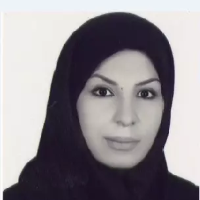Application of WDXRF Spectrometry to Study the Sassanian Silver Coins
Author(s):
Abstract:
The study of ancient materials with help of non-destructive techniques is a routine work in international museums. Techniques such as Proton Induced X-Ray Emission (PIXE), X-Ray fluorescence (XRF), and X-Ray Diffraction are being used. Coins show an important role in our cultural heritage and they also have usually high artistic and cultural value. The Sassanid Empire is the name used for the 3rd Iranian dynasty and the second Empire after Median Kingdom. The Sassanid Empire was founded by Ardeshir I in 224 A.D. after the fall of the Arsacid Empire. The Sasanian Empire was one of the most remarkable empire and civilizations of the 1st Millennium A.D. As one of the two great powers of late antiquity, the Sasanian domain eventually encompassed not only the modern day of Iran and Iraq, but also controlled or influenced the greater part of Central Asia, Afghanistan, Turkmenistan, Uzbekistan, Caucasus, Armenia, Georgia and the Near East. Throughout its existence, the Sassanid Empire had been an absolute monarchy. It ended when the last Sassanid king, Yazdegerd III (632-652 A.D.), lost a 14-year struggle to drive out the expanding Islam. Studying the Sasanian coins, we come to know that they brought about a standardization of weights and the minting of coinage which was directed from above and under the control of the imperial administration. One of these standard coins is silver coin (drachma) which in weight was about 4.25 grams. Techniques of investigation such as wavelength dispersive X-ray fluorescence (WDXRF) analysis can be applied non-destructively without sample preparation. A typical WDXRF system consists of an X-ray tube, a specimen support holder, a primary collimator, an analyzing crystal and a tandem detector. The instrument applied for this study is PW 2404 which made by Philips Company. The resulting fluorescence is resolved by a lithium fluoride (LiF) 220 crystal, and detected by a flow counter. The chemical composition of 16 Sasanian silver coins, collected in National Museum of Iran, was studied by using wavelength dispersive X- ray fluorescence. These coins are belonging to different kings such as Pirouz, Belash, Kavad I, Khosrow I, Hormuz IV, Khosrow II, and Ardeshir III. The metals such as Fe, Cu, Au, and Pb in addition to Ag were observed. The elemental analysis provides information about the economic and political conditions of interested kings. Two type of silver mines were used, galena and cerussite. The cupellation, which is applying for exploration of Galena after oxidation of Pb and Zn, may lead to obtain Ag. Since Au has not been separated from mines, its amount remains the same with coins. In two coins the amount of silver goes down. One of the studied coins belongs to Kavad I and another one belongs to Khosrow II. It may be related to weakness of these kings in short period and they had to increase the amount of Cu for a period of time. If we look at Istakhr and Ardeshir khoreh mint houses, we will find even more. Pirouz, Kavad I, Khosrow II, and Ardeshir III were using Istakhr mint house. The content of silver was remain constant about 96 percent, except in the case of Khosrow II, which became 92 % and still it was good amount among Khosrau II coins. The same thing can be seen for Ardeshir khoreh mint house i.e. Pirouz and Kavad I struck coins with 95 percent silver, but Belash struck coins with 90 percent silver. Since Belash was not a powerful king, and he ruled only four years and therefore the observations confirm the historical evidences. It seems that the silver used in all the Sasanian silver coins, which had been minted in different mint houses, have been extracted from cerussite (PbCO3) mines. In the same mint house, different percentage of silver was observed which might reflect the debasement of coins due to instability and weakness of related kings.
Keywords:
WDXRF , Sassanian , Mint , Elemental Enalysis , Silver
Language:
Persian
Published:
Iranian Archaeological Research Journal, Volume:5 Issue: 9, 2016
Pages:
163 to 174
magiran.com/p1507329
دانلود و مطالعه متن این مقاله با یکی از روشهای زیر امکان پذیر است:
اشتراک شخصی
با عضویت و پرداخت آنلاین حق اشتراک یکساله به مبلغ 1,390,000ريال میتوانید 70 عنوان مطلب دانلود کنید!
اشتراک سازمانی
به کتابخانه دانشگاه یا محل کار خود پیشنهاد کنید تا اشتراک سازمانی این پایگاه را برای دسترسی نامحدود همه کاربران به متن مطالب تهیه نمایند!
توجه!
- حق عضویت دریافتی صرف حمایت از نشریات عضو و نگهداری، تکمیل و توسعه مگیران میشود.
- پرداخت حق اشتراک و دانلود مقالات اجازه بازنشر آن در سایر رسانههای چاپی و دیجیتال را به کاربر نمیدهد.
دسترسی سراسری کاربران دانشگاه پیام نور!
اعضای هیئت علمی و دانشجویان دانشگاه پیام نور در سراسر کشور، در صورت ثبت نام با ایمیل دانشگاهی، تا پایان فروردین ماه 1403 به مقالات سایت دسترسی خواهند داشت!
In order to view content subscription is required
Personal subscription
Subscribe magiran.com for 70 € euros via PayPal and download 70 articles during a year.
Organization subscription
Please contact us to subscribe your university or library for unlimited access!


